In the digital age, printed materials still hold a significant place in the marketing world. Brochures have proven to be an effective tool for businesses to connect with their audience tangibly. They offer a snapshot of your brand, services, or products while leaving a lasting impression. Brochure printing, with its variety of options in folds, binding, printing methods, finishes, and paper stock, allows businesses to create something unique and memorable.
Why quality brochure printing is a must-have for your business.
The importance of brochure printing
Brochure printing is vital for business communication with customers. Unlike fleeting digital marketing, a well-designed brochure is tangible and reminds readers of your brand.
A Physical Connection
Brochure printing offers physicality. Customers can hold and browse through it at their own pace, creating a stronger brand connection than a digital ad.
A Professional Touch
A professionally printed brochure communicates credibility. In a digital world, a printed brochure distinguishes you from competitors and signals trustworthiness.
Longevity
Brochures last long, keeping your message visible. A high-quality brochure may remain on a customer’s benchtop for quick reference and can be shared, expanding your reach.
Versatility
Brochures can be customised for various marketing needs—bi-fold or tri-fold designs, event brochures, or product catalogues—tailoring content and structure to your audience.
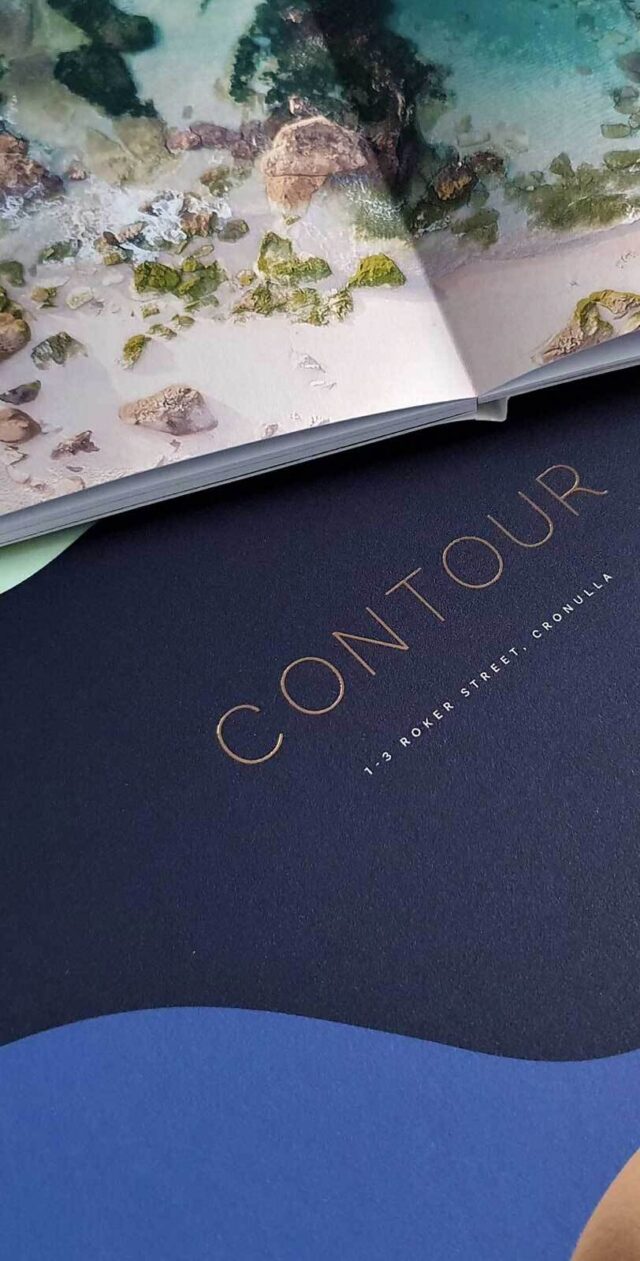
Common binding methods for brochure printing
The binding method you choose can significantly impact your brochure's overall look and feel. Let’s explore some commonly used binding options.
Saddle Stitching
Saddle stitching is one of the most popular binding methods, especially for smaller brochures or those with fewer pages. It involves folding the sheets and stapling them along the crease or spine. Saddle stitching is cost-effective and ideal for brochures that need to be functional yet polished. This method works well for event programs, catalogues, or any brochure with up to 80 pages.
Perfect Binding
Depending on the size of your printed brochure, perfect binding is more suitable for larger, multi-page brochures. This method involves gluing the pages to a spine, giving the brochure a professional, book-like appearance. Perfect binding is commonly used for brochures over 40 pages and is favoured by businesses that want a high-end finish. It allows for a sleek, square spine, perfect for brochures that must make a sophisticated impression.
Stapling
Stapling is a more casual, budget-friendly option. While it doesn’t provide the same polished finish as saddle stitching or perfect binding, stapling is often used for quick, in-house brochures that are distributed informally. It’s a simple but effective way to keep pages together for smaller, one-off print runs.
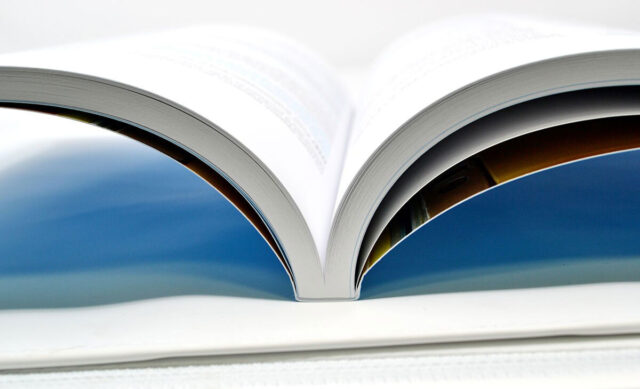
Brochure printing methods: Offset vs. Digital Printing
When it comes to brochure printing, selecting the right printing method can make all the difference. The two most common methods are offset printing and digital printing, each with its own advantages depending on the needs of your business.
Offset Printing
Offset printing is a traditional method where ink is transferred from a metal plate to a rubber blanket and then onto the paper. It’s widely used for large print runs and is known for its high-quality output. Offset printing provides excellent colour consistency and sharp images, making it ideal for brochures that require intricate designs or high-resolution images.
- Best for Large Quantities: Offset printing can have higher initial setup costs, but the cost per unit decreases significantly with larger quantities, making it a cost-effective option for mass brochure distribution.
- Superior Colour Accuracy: If your brochure relies on precise colour matching, offset printing produces consistent, high-quality colours throughout the entire run.
Digital Printing
Digital printing, on the other hand, uses toner or liquid ink to print directly onto the paper. It’s faster and more affordable for small print runs since there’s no need to set up plates, as with offset printing.
- Best for Small Quantities: Digital printing shines when you need a smaller print run or even personalised brochures where each copy might feature different information (like customer names or specific offers).
- Quick Turnaround: Digital printing can provide faster turnarounds because the setup process is simpler, making it perfect for last-minute projects or smaller batches.
Using folds in brochure printing
The careful use of folding in brochure printing plays a pivotal role in presenting and delivering information to the audience. Brochure folds add a dynamic, interactive element to brochure printing and help guide the reader’s journey through the content. Different folding techniques allow businesses to present complex data in a visually appealing and digestible format by organising information into sections or panels. Lane Communications has compiled the most used fold types for brochure printing below.
Trifold Brochure
The trifold brochure is one of the most common folding styles used in brochure printing. It divides the paper into three equal sections, which fold over each other to create a compact, easy-to-carry brochure. Each panel can be used to focus on different aspects of a product or service, making it ideal for step-by-step presentations or information that needs to be revealed in stages.
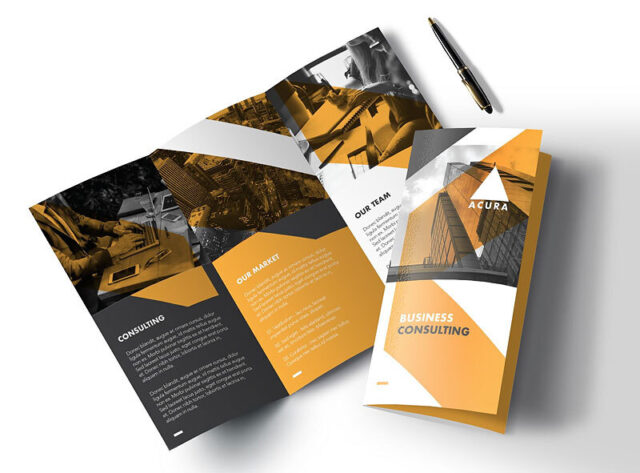
Z-Fold Brochures
Z-fold brochures consist of three panels folded in a zigzag pattern, allowing the brochure to open in a fluid, accordion-like motion. This format is particularly useful for displaying continuous information, such as a timeline, or for presenting a series of connected ideas. The Z-fold offers a sleek, modern design that’s both easy to follow and visually engaging.
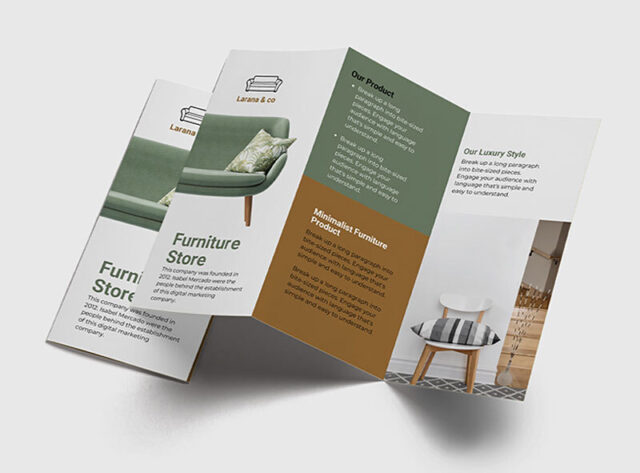
Half-Fold Brochure
The half-fold brochure, also known as a bi-fold, folds a single sheet of paper in half, creating two equal-sized panels. This classic and simple design is perfect for straightforward presentations, such as event programs, menus, or simple service guides. The half-fold provides ample space for large images and clear, concise text without overwhelming the reader.
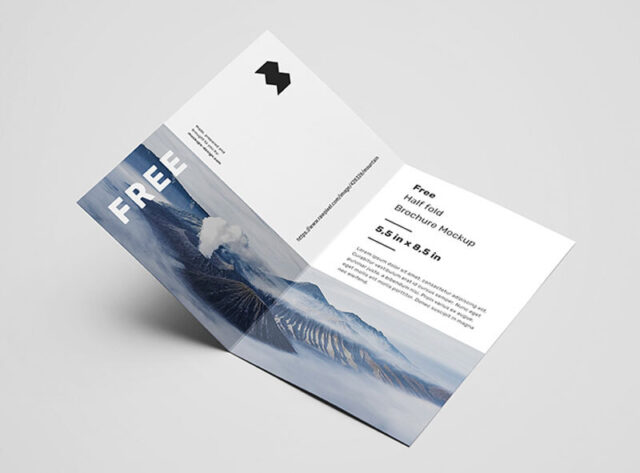
Double Parallel Fold
A double parallel fold brochure involves folding the paper in half and then folding it in half again, resulting in four equally sized panels. This folding style provides a more compact format, making it perfect for detailed brochures that need to convey a significant amount of information while remaining easy to store and distribute.
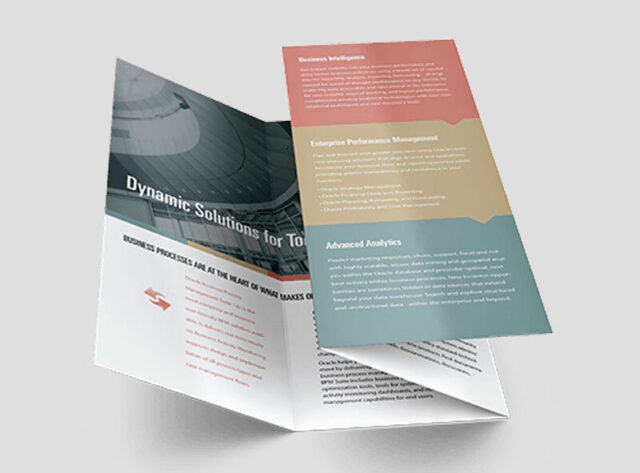
Roll Fold
Roll-fold brochures have multiple panels that fold inwards, one over the other, resembling how you might roll up a piece of paper. This style is often used for brochures with a lot of content, as each panel can introduce new information sections. The roll fold is particularly effective for step-by-step guides or sequential product information.
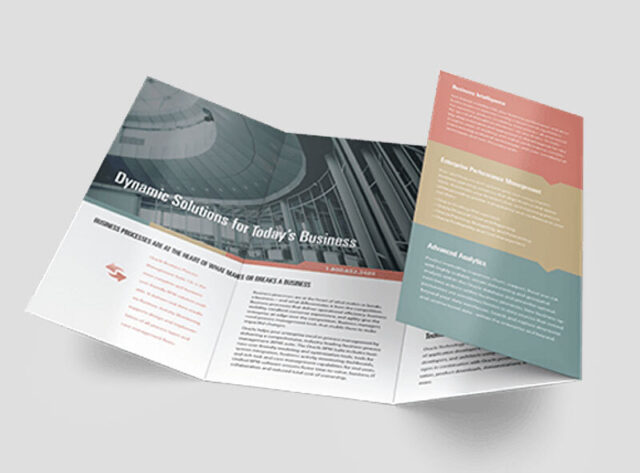
Open Gatefold
Two outer panels in an open gatefold brochure open outwards, revealing a larger centre panel. This format creates a sense of anticipation as the reader unfolds each side to discover the main content inside. It’s ideal for showcasing a featured product, key visuals, or any information you want to emphasise.
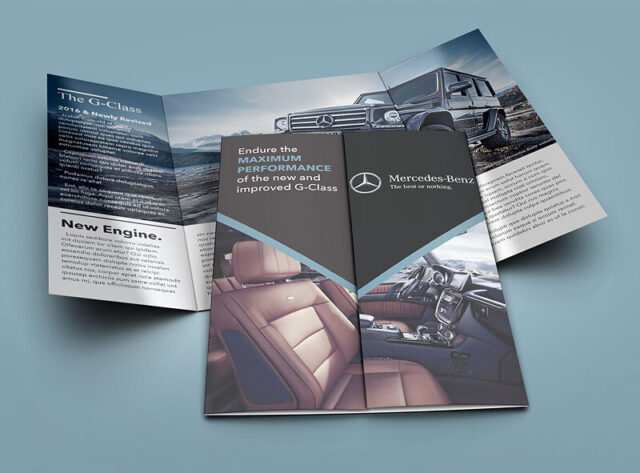
Closed Gatefold
A closed gatefold brochure is similar to the open gatefold but with an additional fold, making it more compact when closed. The brochure opens like a gate, with two outer panels that unfold to reveal the central content. This style is often used for premium presentations, where the reveal of the inner content is an important part of the experience.
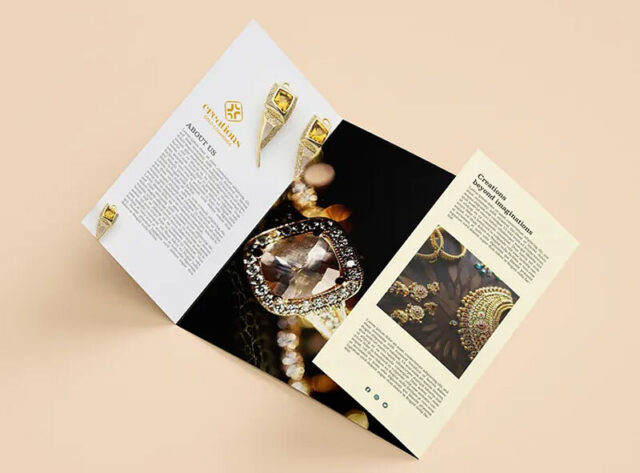
Accordion Fold
An accordion fold features multiple panels folded back and forth, resembling the pleats of an accordion. This style is highly versatile and allows for plenty of space to display information in a step-by-step manner. It’s an excellent choice for brochures that need to present a lot of detailed information while still being easy to navigate.

Specialty finishes for brochure printing
Specialty finishes can elevate the look and feel of your brochure. These finishing touches help create a lasting impression and add a premium feel to your printed material.
Spot Varnish
Spot varnishing is a technique where a glossy or matte finish is applied to specific areas of the brochure, making those areas stand out. This technique is commonly used to highlight logos, images, or important sections of text, creating an eye-catching contrast with the rest of the design.
Embossing and Debossing
Embossing raises certain parts of the paper (such as your logo or a key design element), while debossing presses the paper down, creating an indented effect. Both methods add texture and depth to your brochure, making it more tactile and engaging for readers.
Foil Stamping
Foil stamping involves applying a metallic foil to the brochure, adding a touch of luxury. This technique is often used on high-end brochures where businesses want to convey exclusivity and sophistication. Gold, silver, or copper foil can be applied to logos, borders, or headings to give the brochure an upscale, refined look.
Die-Cutting
Die-cutting allows you to create custom shapes for your brochures, adding a unique touch that sets your material apart from standard rectangular designs. Whether it’s a cut-out logo on the cover or a custom fold-out shape, die-cutting can create a memorable and interactive experience for the reader.
Brochure printing and paper stock
Choosing the right paper stock is crucial for your design. The type of paper affects the texture, feel, and colour appearance.
Gloss Paper Stock
Glossy paper suits brochures with vibrant visuals. It reflects light to enhance colour brightness, making it ideal for image-heavy brochures or product catalogues requiring a polished look.
Matte Paper Stock
Matte paper offers an understated, sophisticated feel with a smooth, non-reflective finish. It improves readability, making it perfect for service brochures or materials requiring extensive reading.
Textured Paper Stock
Textured paper adds dimension, offering a tactile experience. It ranges from subtle grains to coarse finishes, ideal for high-end brochures emphasising craftsmanship.
Recycled Paper Stock
Recycled paper is eco-friendly, reflecting sustainability. Although it may lack the gloss of traditional papers, it conveys environmental responsibility suitable for brands committed to sustainability.
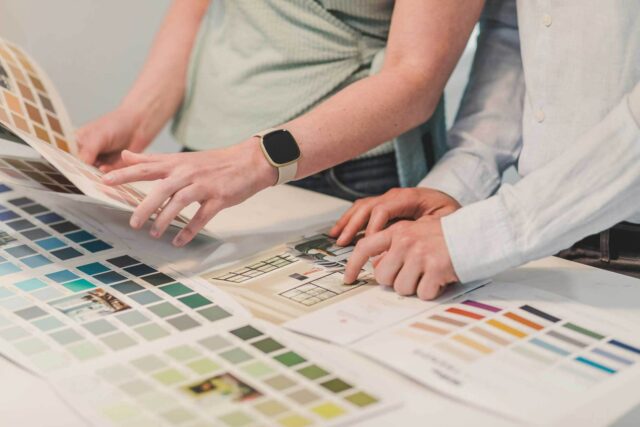
Brochure printing with Lane Communications
Brochure printing remains an essential marketing tool for businesses, offering a tangible way to connect with potential customers. By carefully considering printing elements like binding methods, printing techniques, finishes, and paper stock, you can create a brochure that stands out and effectively represents your brand’s message and values. Whether you are producing a high-end, luxurious look or a more casual, budget-friendly design, the options available in brochure printing with Lane Communications allow you to customise every detail to meet your business needs.

